A snow sensory bin shouldn’t be rocket science if you happen to live in an area where snow is available in the wintertime. So how is it I’ve never created one? We started ours the day my grandson was looking out the window a few weeks after a big Christmas snowstorm and asked, “What happened to all of the snow?”
It’s a fair question. And the easy answer is, “It melted.” But if you are four, that just might not be a good enough answer. What does melted even mean?
Experiment #1 – How Does Snow Melt?
There are still a few piled-up snowdrifts from the last storm. We headed outside to grab a big bowlful of snow to bring inside for each of us.
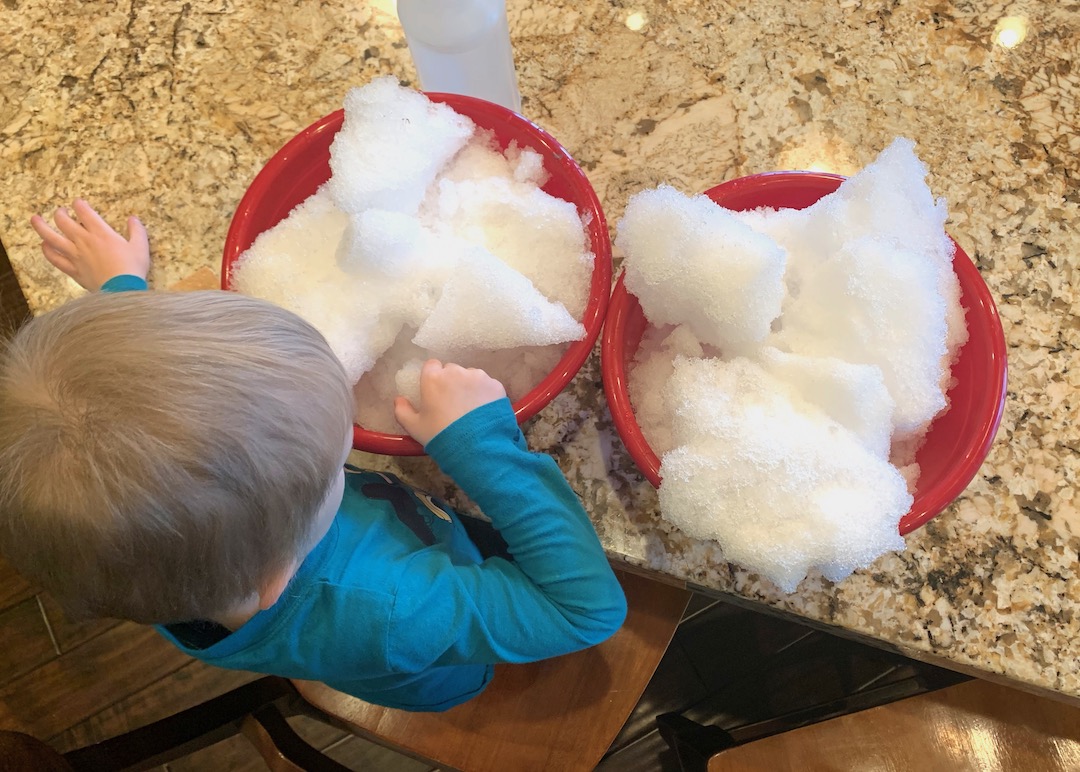
We tried squirting the snow with some water to see what would happen.
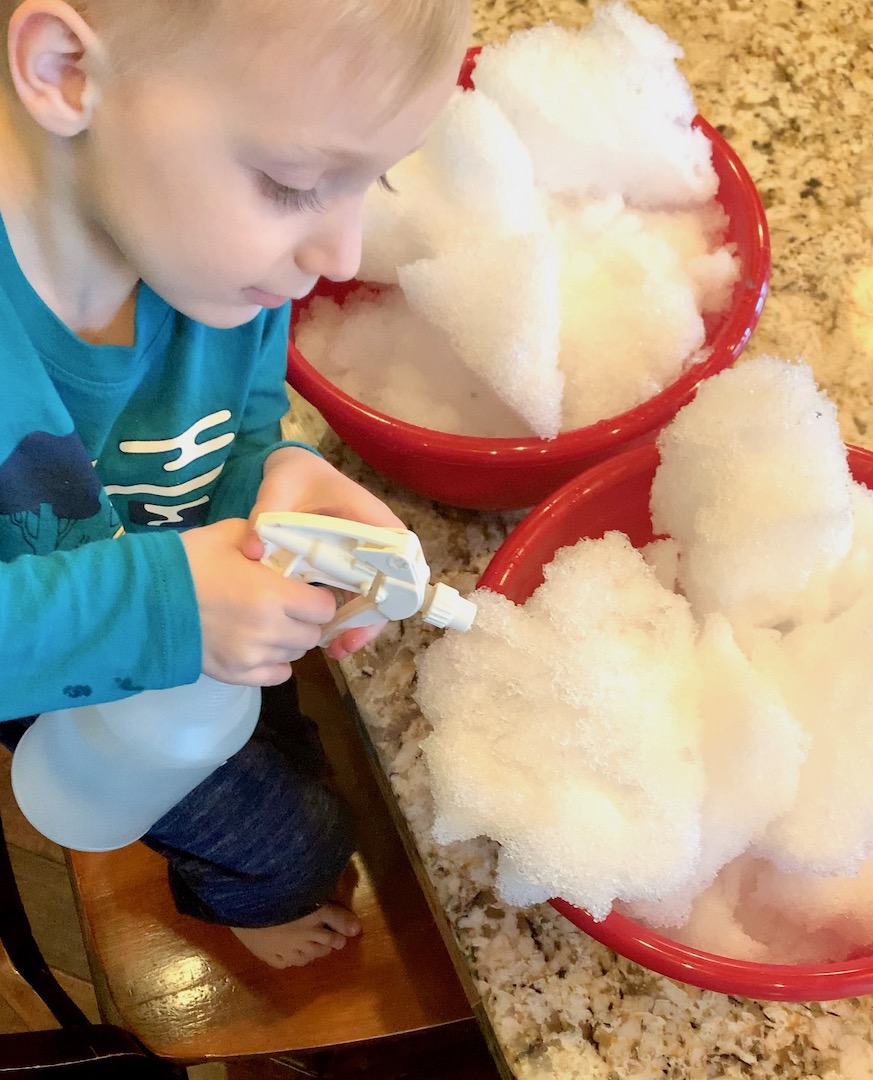
Next, we tried squirting the snow with HOT water to see if that worked differently.
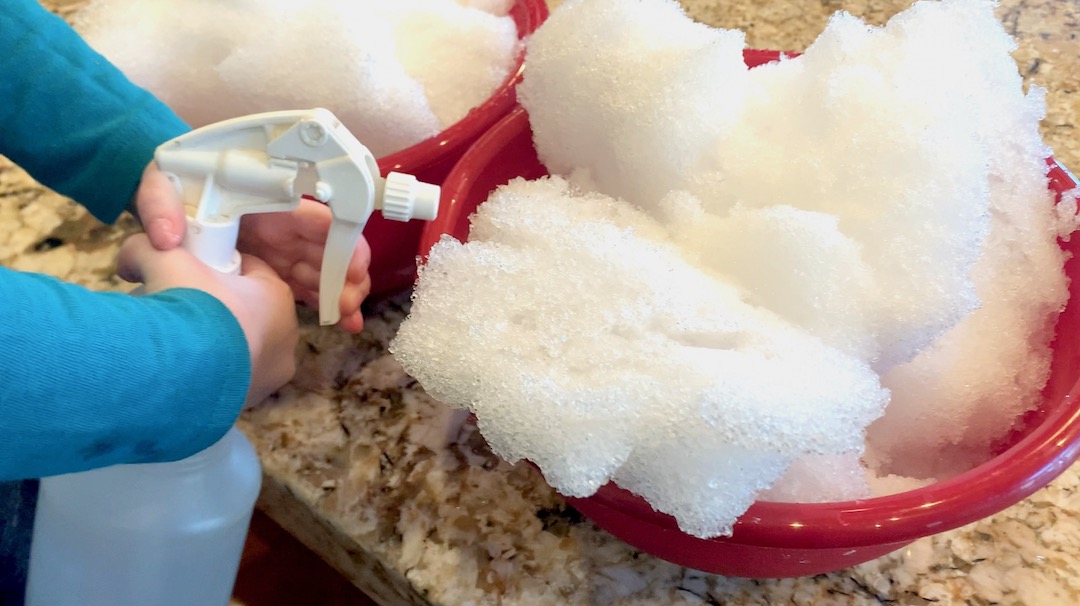
Since the hot water made some cool holes in the snow where it touched the snow crystals, we decided to try another experiment and turned on the blow dryer while we were holding a piece of snow. Something crazy happened. The snow made our hands all wet!
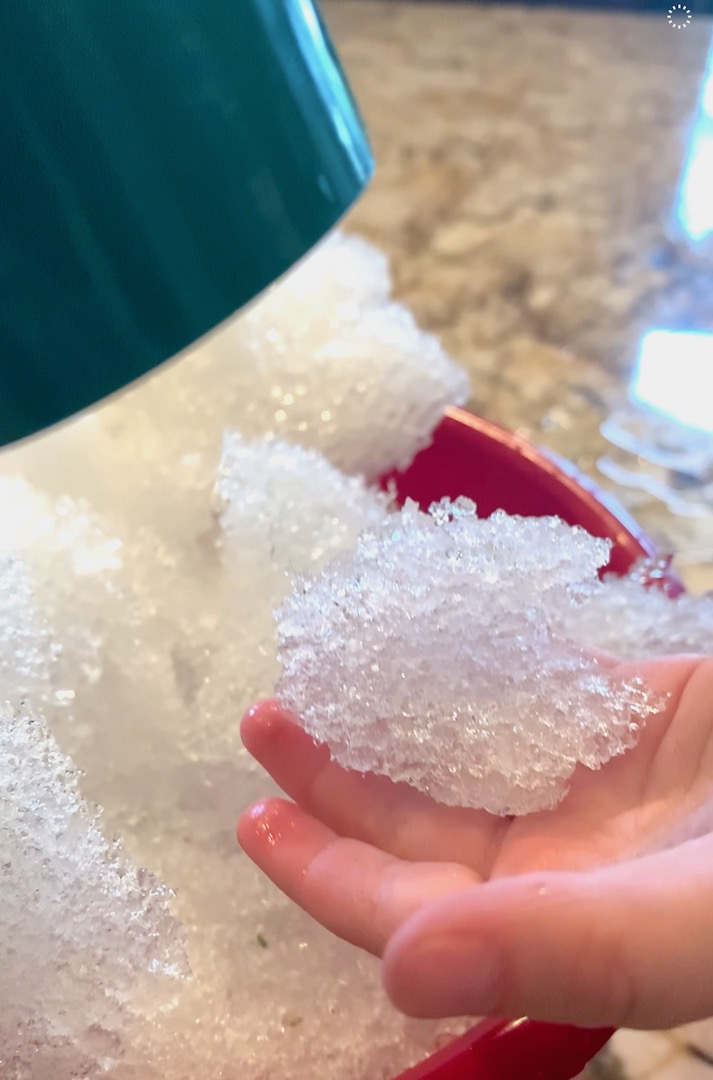
Last, we put some snow into a pan on the stove and heated it up. Sure enough, it melted (which was kind of cool to watch, especially when we filmed it in time-lapse with Grandma’s smartphone). Our snow turned into….hot water. Of course, we immediately poured that over some more snow just to see what would happen.
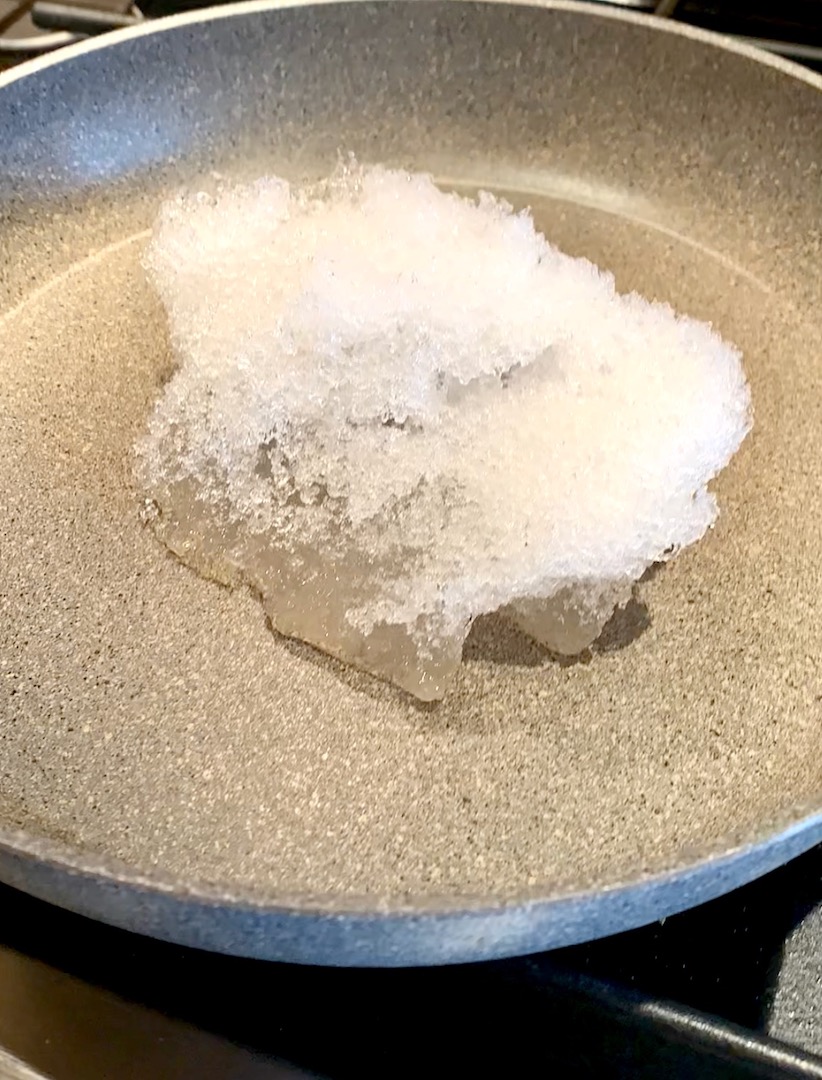
Experiencing Freezing and Melting
This project may sound incredibly elementary to you, and not all that exciting. But to a 4-year-old, it’s pure magic! His eyes showed wonder at almost every step in the process. Strangely, though, the concept of “if you add something hot to something frozen, the frozen thing can melt,” which is what I had planned for our little experiment to show, didn’t really seem to stick. Freezing and melting may be concepts that are still a bit beyond his developmental ability to master. I didn’t realize that until we started discussing what he was learning.
Here’s my takeaway: I haven’t failed. I’ve simply grown more alert to the fact that his brain will absorb concepts when it is ready to. All I need to do is keep providing the learning tools and let his brain process them in ways that are perfectly appropriate for him.
Experiment #2 – A Bigger Snow Sensory Bin and How We Collaborated to Extend the Fun
Soon, we had finished playing around with melting our crystallized snow. It really wasn’t great snow — not at all powdery and fluffy like it is when it first falls. Yet we both wanted to play some more. What is closer to the truth is that I could see he was still having fun, so I wanted to find a way to occupy him a little longer while I got some work finished.
I dumped a little more snow into a shallow plastic bin. Next, I remembered some small spray bottles I had on hand. I filled one with purple water (tinted with food coloring) and another with green. We rummaged around in the cupboards for a couple of new tools — a ladle for shaping snow and a sieve. The handle on the ladle got too cold within seconds, which meant it wasn’t going to work as a snowball-making ladle as I had hoped. But a wooden-handled silicone spatula proved satisfactory. The result was an expanded snow sensory bin. He sprayed some colored water into the snow, found a toy car, and this modification kept one 4-year-old, a toy car, and a wooden spoon occupied for most of an hour.

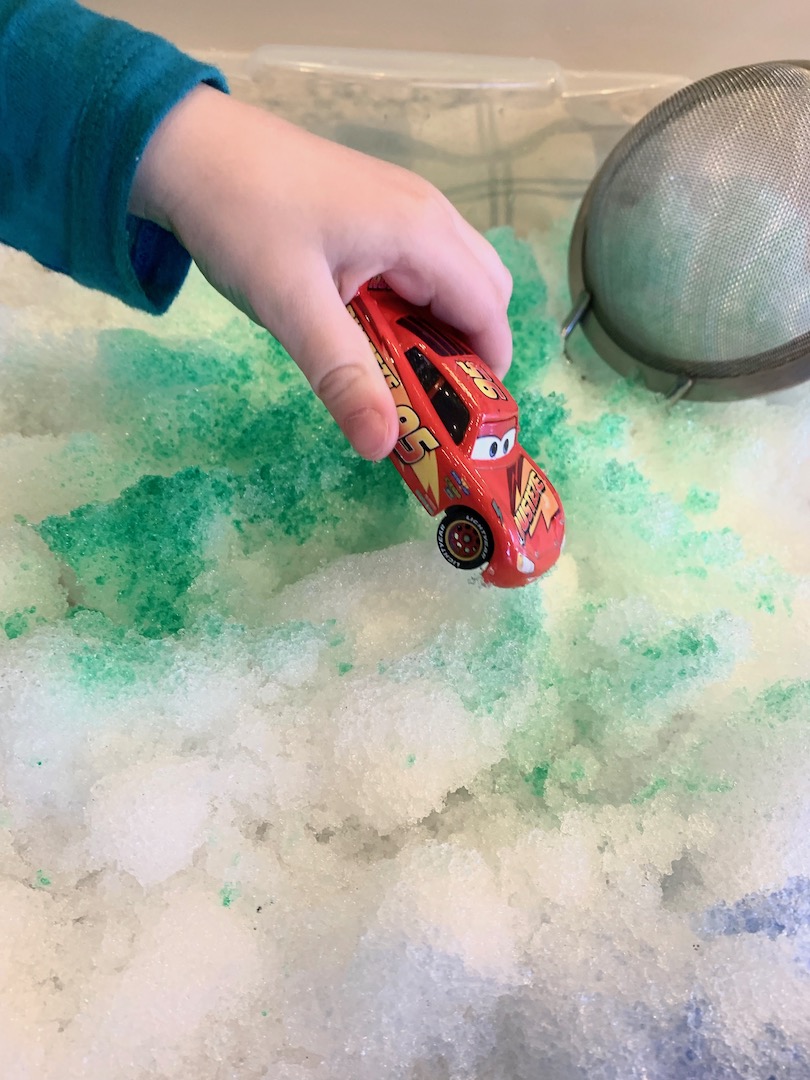 We added just a bit of food coloring to a squirt bottle to give our snow a little color.
We added just a bit of food coloring to a squirt bottle to give our snow a little color.
When his hands got cold, I suggested we stop. He asked for gloves instead. His brain was still engrossed in whatever it was learning, even if it doesn’t happen to be grasping thermodynamics quite yet.

The Learning Lesson: Allow the Play to Pivot Naturally
I am always surprised when play pivots. I was surprised that even after watching our snow melting in several different ways, he still didn’t seem to truly grasp why it had melted, only that it had. The fact that something as simple as a bin of snow and a toy car can occupy a child for so long fills me with wonder. A child at play almost never takes the play in the direction an adult would. Some other odd realizations included the fact that he only wanted a small section of his snow colored, rather than the whole box. While he liked seeing some of the snow change color, he wasn’t at all interested in spraying it himself. He seemed to want most of his snow to stay white. I found that odd — not at all what I would have done if I were choosing.
He didn’t want to make snowballs and push snow through a sieve. He wanted to invent a driving range, complete with a snow tunnel and a snow cave. That is also not what I expected. The hardest part of collaborative play like this is taking on the role of observer, and not being too insistent on developing my own ideas. Rather, the magic is in letting a child’s brain manipulate the situation in a way that is fun for the child.
Make Your Play Your Own
I hope that if you happen to live where the snow lives you will find a cozy winter day to bring a pile of it indoors and just see where your curiosity will take you. It’s a fair bet that your play will not look like at all like ours did at all. And if it takes a different angle, congratulations! You are finding ways to respond to the needs of your child’s very own amazing brain. I hope it is as fun for you as it was for us!
